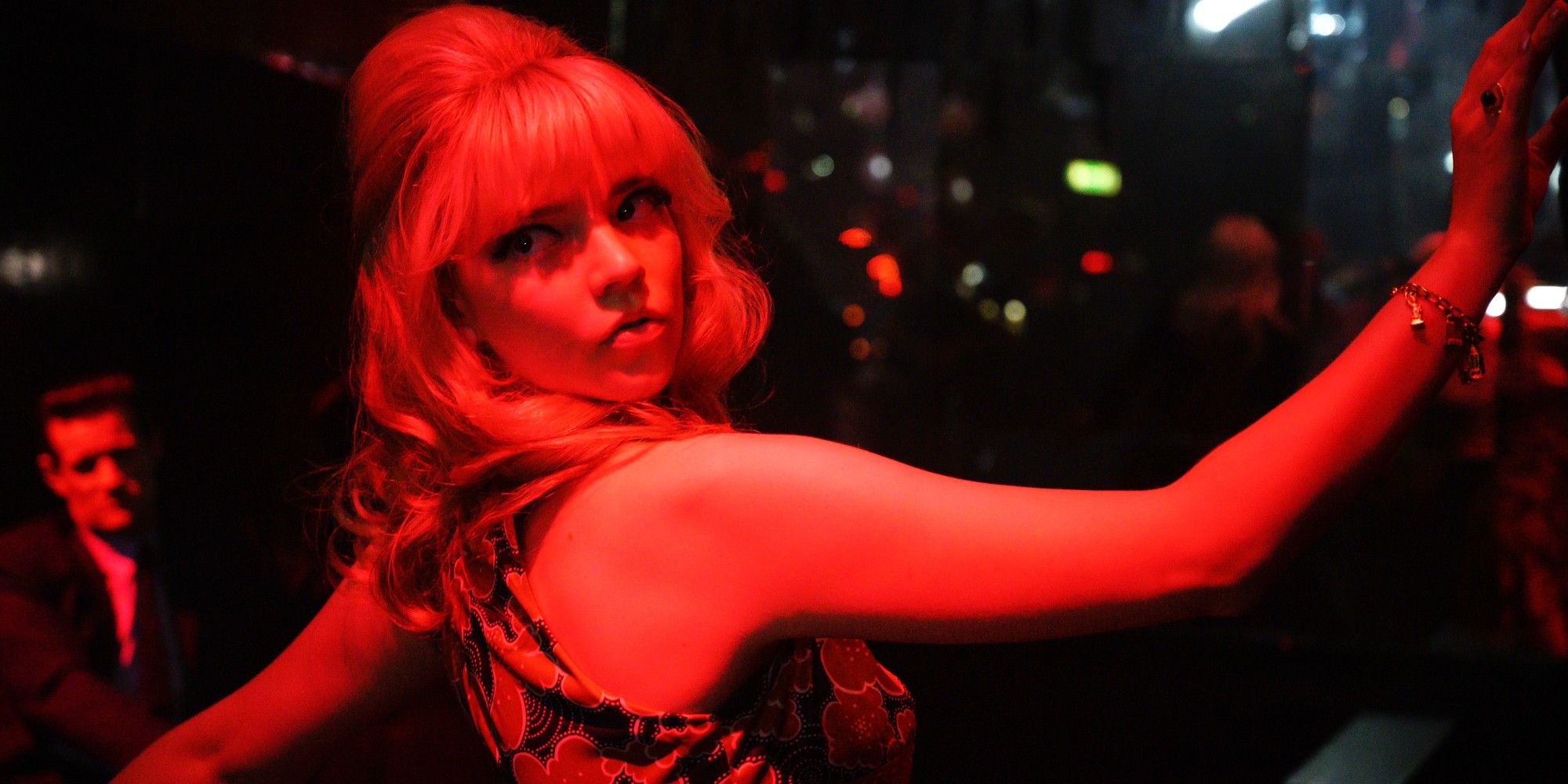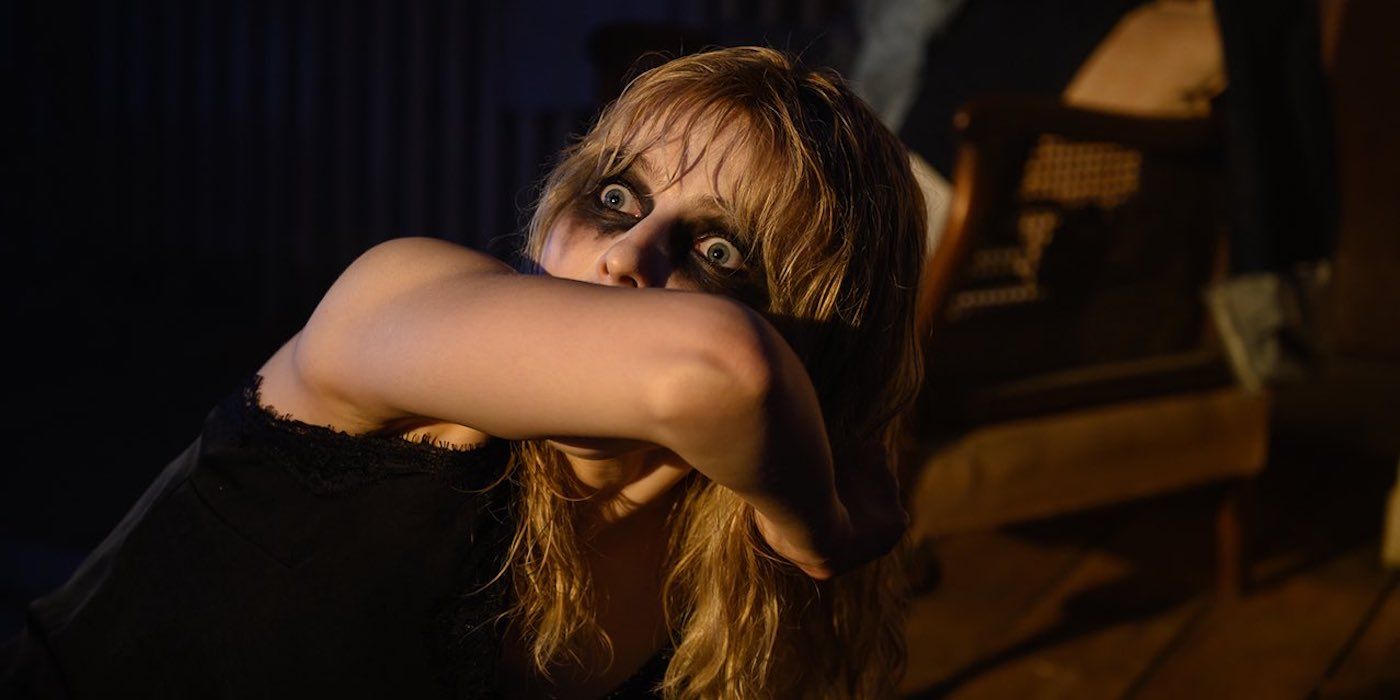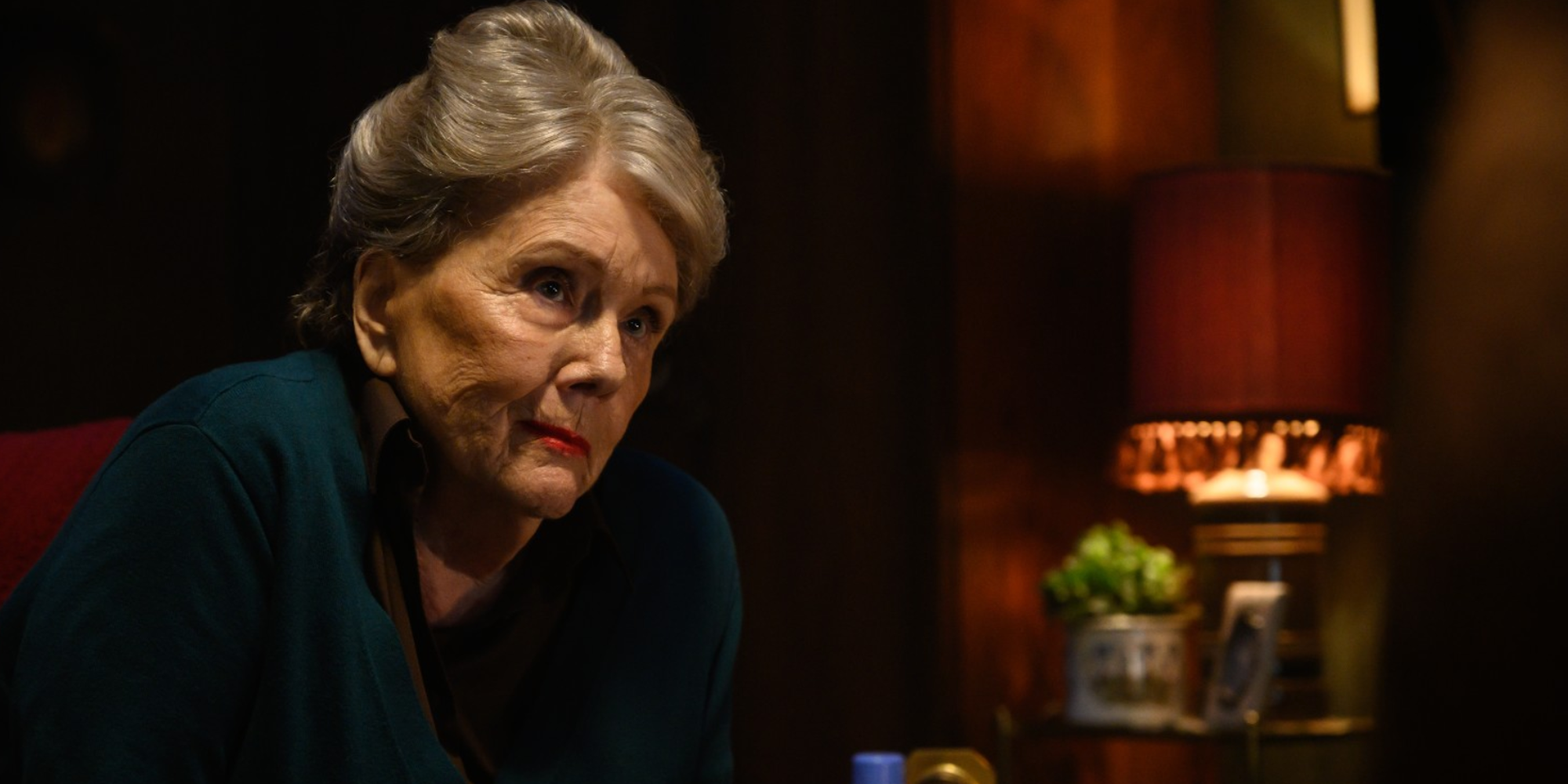While acclaimed filmmaker Edgar Wright has always worn his cinema influences on his sleeve, his latest film, Last Night in Soho, explores the dark side of nostalgia. Wright directed the film based on a screenplay he co-wrote with Krysty Wilson-Cairns. In Last Night in Soho, Wright delves into full-fledged psychological horror as a young fashion student named Ellie moves to London and finds herself transported to the Swinging Sixties each night. However, the 60s glamor she admired all her life is more deadly than she could have imagined.
In a roundtable interview attended by CBR and other press outlets, Wright and Wilson-Cairns shared what inspired Last Night in Soho's script and its practical effects. Wright also divulged some of the film's behind-the-scenes secrets, including Anya Taylor-Joy's original role.
CBR kicked off the interview by asking Wright and Wilson-Cairns why they wanted to deconstruct and delve into the dark side of something as iconic as Swinging London.
"The '60s are still, to this day, the most discussed decade of the 20th century to me on a cultural level," Wright said. "In the U.K., the shadow of the '60s hangs very largely over London itself, and Soho specifically, because there was a moment in the '60s where it seemed like we were the leaders in culture... The city that was the epicenter of cool in the mid-60s was London. That was something that never really went away and, while we both love London and Soho, it does create that feeling that maybe you missed out on the best time and the glory days. The danger there is to use 'the good, old days' as a term because there is no decade where everything is great and nothing is bad. If you romanticize the past, it's disingenuous and there are dangers in doing that."
"I think for women, in particular, the '60s is one of those seminal decades," Wilson-Cairns added. "You've very much got the rise of feminism, the fashion, birth control, and everything. It's one of those decades that constantly reoccur in makeup and hair. Every five years, there's a '60s revival. That's all I knew about the '60s until I came on to this project and got the research and started to dig in and found out it really isn't all rose-tinted. That to me is the real theme of the film, the dangers of nostalgia and looking back, glossing it over, and not realizing how difficult it is. That's what the whole film blossoms into for Ellie."
For inspiration, Wright drew from his background going to an art college outside of his hometown, which he found to be "a humbling experience." He felt a bit more isolated and not as hip as some of his peers. Following his collegiate education, Wright felt this sentiment was compounded when he relocated to London. The pressures of living in a big city made him ponder if he should continue to maintain his sense of individuality or "fold into what everyone else is doing." Wright's mother and sister-in-law both studied fashion, like Ellie in Last Night in Soho, with Wright's sister-in-law originally from Cornwall, the same English hometown as Ellie. Wilson-Cairns mentioned similar experiences, moving to London from her native Glasgow for film school and felt there was a universality to this perceived isolation for those "on the cusp of adulthood [moving] and trying on a new persona and work out who you're going to be for the rest of your life."
In creating the character of Ellie, Wright felt she was primarily raised by her grandmother. She was heavily influenced by the pop culture that her grandmother had grown up with as a result. Wright reflected that his parents stopped collecting vinyl records around the time he and his brother were born. He listened to all their music from the '60s constantly. While Wright continues to appreciate this, Last Night in Soho explores how "nostalgia is a retreat and failure to deal with modern life."
Wilson-Cairns recalled seeing photographs of her grandparents, wondering what sort of people they were. She shared that her grandmother also worked in fashion, further helping inspire the script, filtering "the things that catch your eye through character."
Wright and Wilson-Cairns began working together on Last Night in Soho before the #MeToo movement had started and noted that they did not want the film "to feel like it was jumping on any sort of bandwagon" with its social commentary. Instead, Wright explained that "the sad, bleak truth" was that the horrors in the fashion and entertainment industries in its treatment of women had "been going on forever" and lamented that many such real-life stories would never be heard. Wilson-Cairns reminded everyone that "with horror, you should write about stuff that really scares you," with toxic masculinity and the exploitation of women certainly scaring her personally.
Even before writing Last Night in Soho, Wright was well-versed in psychological horror cinema. He looked to British dramas that addressed social issues in the 1960s for further inspiration for the film. Several filming locations in Last Night in Soho were also used in the 1960 British psychological thriller Peeping Tom, coincidentally near Wright's actual home in London.
While Wilson-Cairns received "a stack of DVDs" of films to help inform the writing and evoke the era, she was particularly struck by newsreel footage of the time period. With Wilson-Cairns also living in Soho while writing the film and reviewing the research material, this lent a sense of familiarity echoed by Ellie's connection to the Soho of a bygone era.
The talk then shifted to Last Night in Soho's cinematographer Chung Chung-Hoon, with this project marking Wright's first collaboration with the South Korean director of photography. "It was a gift to work with Chung, not only because he's such a gifted cinematographer but he is also one of the funniest men that I've ever worked with," Wright said. "Which I normally wouldn't have expected from the movies he's shot, like Oldboy and The Handmaiden, but he had the uncanny knack of making me laugh even when I was super stressed out. When I think of him, it makes me smile because he's just such a funny man."
"The thing that was great with him is he actually came on to the project quite late because Bill Pope was supposed to shoot it and sadly had to drop out," Wright continued. "We had to find a new DP two months before we started. Chung was available and interested in the project and when I saw his name listed among the people who were available, Chung Chung-Hoon is the guy who shot Oldboy, Thirst, Lady Vengeance, and The Handmaiden. All of those movies he did with Park Chan-Wook have this dark opulence, so I guess it was a match made in heaven. What was amazing was he came to London straight from the set of another movie and had to dive headfirst into what we had already come up with. The great thing was he just locked into what we wanted to do immediately and elevated it beyond that as well."
Wright revealed he met star Anya Taylor-Joy before he met Wilson-Cairns, "before a word of the screenplay was written." After watching The Witch at the Sundance Film Festival, Wright met with Taylor-Joy over coffee in Los Angeles to tell her the planned plot of Last Night in Soho, with Taylor-Joy intrigued by the project. Initially, Wright intended for Taylor-Joy to portray Ellie. But as time progressed, and Wright watched Taylor-Joy in other films, the role of Sandie expanded. Wright felt Taylor-Joy was a better fit for that character. "Luckily she agreed," he added.
For Matt Smith's sinister character Jack, Sandie's manager and boyfriend in the 1960s, Wright felt that Smith's natural charm helped make the character more palpable, even as he dialed up Jack's evil qualities throughout Last Night in Soho. Wright's one more bit of direction to Smith was for the actor "to play it like he thought he was doing the right thing, or rather, that terrible phrase 'this is how it works.'" Wright found one of Jack's most disturbing moments in the film was during a sequence where it's unclear if the character was being malicious or truly believed his behavior was the only way to continue in show business.
For the sequences Taylor-Joy and Thomasin McKenzie shared, including a mind-bending dance sequence in a '60s nightclub, Wright noted that the production used "every trick in the book" to pull off those scenes properly. Wright felt that the sequence worked better for the audiences when more practical effects were used. This approach helped intentionally disorient the audience during these surreal sequences but also helped immerse the cast, particularly McKenzie, as her character Ellie was transported to witness different characters in the past.
Everyone in the production, including Wright, were big fans of Diana Rigg -- even before her casting in Last Night in Soho as Ms. Collins. After sending Rigg a copy of the script to offer the role, Wright recalls meeting with the late actor over drinks to discuss her potential participation. Rigg told Wright, "I read the script and really enjoyed it. Some people are scared by the dark material but I'm not!" For Wright, his first memory of Rigg is how truly funny she was, both on-screen and in-person, and felt that while it was sad Rigg was not alive to see the finished film premiere, he was "grateful [he] got to know her at all."
Directed and produced by Edgar Wright and written by Wright and Krysty Wilson-Cairns, Last Night in SoHo is in theaters now.




